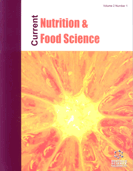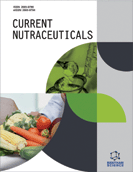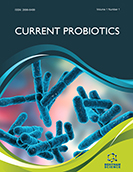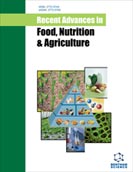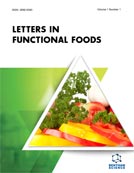Abstract
Iron deficiency is one of the leading nutritional problems worldwide, affecting an estimated total of about 2 billion individuals. Nearly 40% of children younger than 5 years and about 50% of pregnant women in developing countries are anaemic. However, iron deficiency is also common in women and young children in industrialised countries. Due to developmental and maturational processes and needs, there are some particularities of iron metabolism in infancy and the general regulative mechanisms seem not to be easily applicable in infants. Infants and young children in the period of rapid growth (six to 24 months) are at high risk to develop iron deficiency (ID) or even iron deficiency anaemia (IDA), when their high physiological requirements can not be met by iron absorption from diet. The physiology of iron metabolism during infancy is characterized by developmental changes e.g. in regulation of key intestinal and hepatic proteins regulating iron absorption in response to changing iron status. Considering the long term consequences of ID on the development of motor and cognitive performance, a better understanding of the physiology of iron homeostasis during infancy may help further to improve the control of iron deficiency in infants.
Keywords: Development, infant, iron, physiology, myeli-nogenesis, dendritogenesis, synaptogenesis, transferrin, on-togenesis, embryonal (prenatal), Hb(HbE), foetal Hb (HbF), adult Hb (HbA), HbA, ferritin (Fer), hemosiderin, Stores regulator, Dietary regulator, Erythropoetic (Erythroid) regulator, divalent metal transporter, Ferroportin, Hepha-estin, myelination, psychomotor development, hematocrit (Hct), zinc protoporphyrine, hepcidin, hypoxia, ferroxidase Hephaestin, oxalates
Current Nutrition & Food Science
Title: Iron Status in Infants and Relation to Dietary Intake. Part 1: General and Developmental Aspects
Volume: 6 Issue: 4
Author(s): Katharina Dube, Mathilde Kersting and Hermann Kalhoff
Affiliation:
Keywords: Development, infant, iron, physiology, myeli-nogenesis, dendritogenesis, synaptogenesis, transferrin, on-togenesis, embryonal (prenatal), Hb(HbE), foetal Hb (HbF), adult Hb (HbA), HbA, ferritin (Fer), hemosiderin, Stores regulator, Dietary regulator, Erythropoetic (Erythroid) regulator, divalent metal transporter, Ferroportin, Hepha-estin, myelination, psychomotor development, hematocrit (Hct), zinc protoporphyrine, hepcidin, hypoxia, ferroxidase Hephaestin, oxalates
Abstract: Iron deficiency is one of the leading nutritional problems worldwide, affecting an estimated total of about 2 billion individuals. Nearly 40% of children younger than 5 years and about 50% of pregnant women in developing countries are anaemic. However, iron deficiency is also common in women and young children in industrialised countries. Due to developmental and maturational processes and needs, there are some particularities of iron metabolism in infancy and the general regulative mechanisms seem not to be easily applicable in infants. Infants and young children in the period of rapid growth (six to 24 months) are at high risk to develop iron deficiency (ID) or even iron deficiency anaemia (IDA), when their high physiological requirements can not be met by iron absorption from diet. The physiology of iron metabolism during infancy is characterized by developmental changes e.g. in regulation of key intestinal and hepatic proteins regulating iron absorption in response to changing iron status. Considering the long term consequences of ID on the development of motor and cognitive performance, a better understanding of the physiology of iron homeostasis during infancy may help further to improve the control of iron deficiency in infants.
Export Options
About this article
Cite this article as:
Dube Katharina, Kersting Mathilde and Kalhoff Hermann, Iron Status in Infants and Relation to Dietary Intake. Part 1: General and Developmental Aspects, Current Nutrition & Food Science 2010; 6 (4) . https://dx.doi.org/10.2174/157340110793663734
| DOI https://dx.doi.org/10.2174/157340110793663734 |
Print ISSN 1573-4013 |
| Publisher Name Bentham Science Publisher |
Online ISSN 2212-3881 |
 4
4
- Author Guidelines
- Bentham Author Support Services (BASS)
- Graphical Abstracts
- Fabricating and Stating False Information
- Research Misconduct
- Post Publication Discussions and Corrections
- Publishing Ethics and Rectitude
- Increase Visibility of Your Article
- Archiving Policies
- Peer Review Workflow
- Order Your Article Before Print
- Promote Your Article
- Manuscript Transfer Facility
- Editorial Policies
- Allegations from Whistleblowers
- Announcements
Related Articles
-
Opioid-induced Cardioprotection
Current Pharmaceutical Design Connecting the Dots: Molecular and Epigenetic Mechanisms in Type 2 Diabetes
Current Diabetes Reviews Targeting Mammalian Target of Rapamycin: Prospects for the Treatment of Inflammatory Bowel Diseases
Current Medicinal Chemistry Ivabradine: Cardiovascular Effects
Recent Patents on Cardiovascular Drug Discovery The Role of Venous Abnormalities in Neurological Disease
Reviews on Recent Clinical Trials Neurotrophin Receptor-Based Strategies for Alzheimers Disease
Current Alzheimer Research subject Index To Volume 1
Current Medicinal Chemistry Emerging Therapeutic Strategies for Rheumatoid Arthritis
Current Drug Therapy Modifiable Risk Factors for Dementia: The Role of Gut Microbiota
Current Alzheimer Research New Avenue of Research: Antiepileptic Drug and Estradiol Neuroprotection in Epilepsy
Recent Patents on CNS Drug Discovery (Discontinued) Sigma Receptor Activation Reduces Infarct Size at 24 Hours After Permanent Middle Cerebral Artery Occlusion in Rats
Current Neurovascular Research Recent Advances on Small-Molecule Survivin Inhibitors
Current Medicinal Chemistry Pharmacological Tools to Activate Microglia and their Possible use to Study Neural Network Patho-physiology
Current Neuropharmacology General Anesthetics in Brain Injury: Friends or Foes?
Current Pharmaceutical Design Potential Protective Effect of Dl-3-n-butylphthalide on Chronic Cerebral Ischemia Brain Injury
CNS & Neurological Disorders - Drug Targets Applications of Nuclear Technique to Biological Sciences Labelled Compounds, Radioactive Tracers, and X-Ray Tomography
Current Topics in Medicinal Chemistry MicroRNAs: Emerging Role in the Endogenous μ Opioid System
CNS & Neurological Disorders - Drug Targets Intrauterine Growth Restriction in Singleton Pregnancy-Surveillance and Delivery: An Overview
Current Women`s Health Reviews The Role of Autophagy on the Survival of Dopamine Neurons
Current Topics in Medicinal Chemistry The Role of Progenitor Cells in Osteoarthritis
Current Rheumatology Reviews


